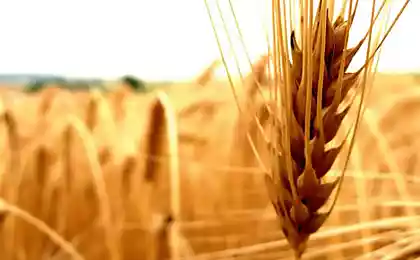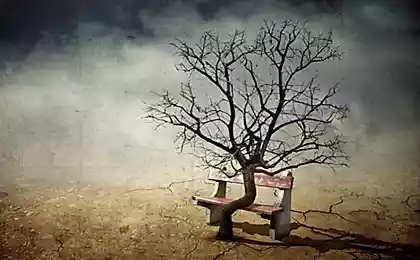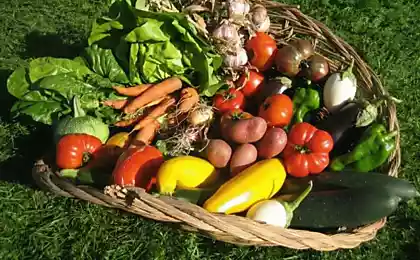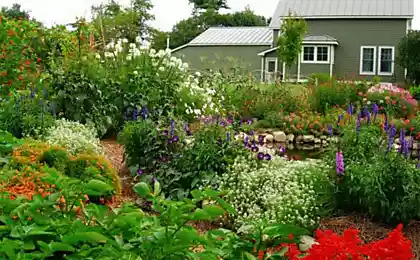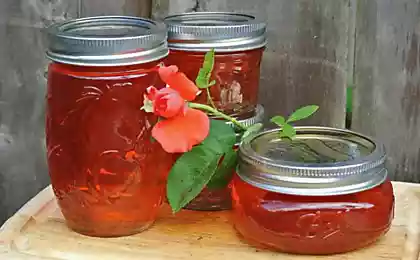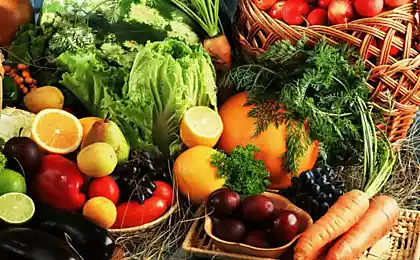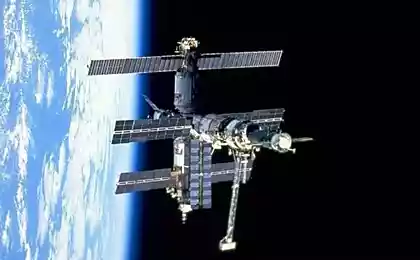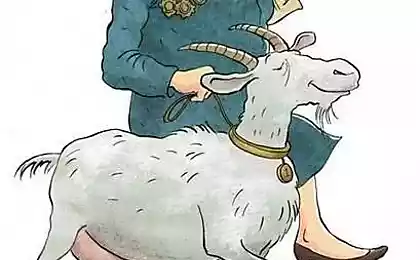589
Organic agriculture — basic principles, history and facts
Thirty two million three hundred ninety four thousand seven hundred fifty four
High yields, low costs, there is no "chemistry" is organic farming. Organic farming is a sensible approach to land and plants, which are achieved thanks to stable yields with minimal expenditure of funds without the use of fertilizers and pesticides. The idea is to arrange the farm like natural ecosystems in which every creature has its purpose and lives in harmony with others. Hundreds of millions of years our Earth was fed by vast forests, meadows, steppes. No special soil is not plowed and is not fertilized, and her fertility was inexhaustible. More than 6,000 years of cultural cultivation, the fertility of the land was preserved.
In the twentieth century due to active incorrect treatment of the soil began to impoverish. In recent decades, scientists have realized many mistakes. The result was to develop organic farming based on understanding the interaction of soil, plants, animals and forces of nature. Doing his farm in harmony, a good farmer only directs the process and not waste energy fighting against nature. No wonder in ancient times the profession of a farmer was considered the most respected and skilled!
Basic principles of organic farming is simple. First, the land should be loosened no deeper than 5 cm, and not to dig and to plow. The earth is a living organism. It is like a sponge, riddled with many roots, rich in a huge number of worms and microorganisms.
Here's what he wrote V. V. Dokuchaev in his book "Our steppes before and now": "Try to cut virgin of the ancient steppe cube of soil, you will see it has more roots, herbs, moves bugs, larvae, than the earth. All this seething, drills, sharpens, digs the soil, and the result is incomparable than a sponge". On the decisive role of worms in the formation of soil fertility wrote Charles Darwin in the book "Education to the vegetation activity darewych worms": "Long before the invention of the plow, the soil will be processed correctly earthworms and always will be obrabatyvatsya them."
Russian scientist Yu Sedalin, and after him many others found that 1 hectare of land that is not poisoned with chemicals, is home to around 200 kg of bacteria and about the same of worms and other animals that produce more than 500 kg of vermicompost per year. These "natural farmers" fertilize and nourish the plants.
Scientists have proved that deep ploughing and digging of soil inhibits the activity of worms and microorganisms, destroys soil structure, reduces its fertility. With deep plowing and digging the soil is saturated with oxygen, which encourages soil bacteria to pererabatyvaya humus in mineral elements available to plants. This ensures high yields on the ploughed virgin lands. But only the first 2-3 years! And then the amount of humus rapidly decreases, yields decline, weakens the immunity of plants, rasprostranyayutsya pests and diseases. And then the necessary fertilizers, pesticides. And how much effort is spent on it! For example, homeland 6 acres, we have 200 tons of earth to turn over a shovel! With ploskorez Fokine's the same 6 acres you can easily prepare your planting for a half-day. The soil structure when such processing is not disturbed, loosen and fertilize her "natural farmers" and do this job better than any artificial techniques! Ploskorezy the effectiveness of treatment confirmed years of experience of farmers in many countries.
The second basic principle of organic farming includes mulching. Mulch is all covered with soil, hay, straw, leaves, sawdust or just plane clipped the weeds. In nature there is no black land, she's always covered with leaves or grass. Naked, unprotected soil is overheating in the sun very quickly loses moisture, after the rain turns into mud and stops breathing when supercooled frost, erosion. Mulch protects the earth and creates favourable conditions for worms and micro-organisms, and eventually turns into humus.
Finally, the need to revive the earth, feeding the worms and soil microorganisms. The easiest way to do this is to use a "green manure" plants-the green manures that successfully replace manure, compost and mineral fertilizers. Invaluable assistance in improving soil fertility have drugs effective microorganisms. It is a useful bacteria and fungi that, when introduced into the soil to thrive, recycle organic matter, process it into a digestible form for the plants to inhibit the effect of accelerating plant growth, increasing fruit weight and timing of their preservation. This technology was developed by Japanese scientists of Tera Higa and has been used successfully in many countries of pathogenic bacteria and fungi, fixed mineral elements. This achieves a striking for more than 15 years.
There is in organic farming, its intricacies and agricultural practices: natural and effective ways of protection of plants from illness and pests, planning of garden beds, crop rotation, strain renovation and many more.
The story is gentle on the soil agriculture is very old and full of amazing and dramatic moments. The ancient Sumerians (XXX century BC) cultivated land knotty stick and got 200-300 quintals of barley and wheat per hectare! (S. N. Kramer's "History begins in Sumer"). Now 50 tons — almost a record. The secret is simple: there was nothing to plow and dig, so the ground was just loose. And this, as we now know, is the best way of treatment. And for food you did not need the ears: all the straw remained in the fields, next year turned into fertilizer.
Then a gnarled stick was replaced by the shovel. Productivity, especially in the virgin lands has increased. But since then, the ground began to experience the "shock" from the hands of man. Came after the plow tilled the soil without turning the reservoir, specific perturbations soil organisms have not experienced.
More than two hundred years ago was invented the horse-plough that tilled the ground with a turnover of formation. He allowed a short time to develop very large tracts of virgin lands. Plow dramatically affected the inhabitants of the soil. Later used the tractor the plow was even more productive, but also impact on soil — catastrophic. After his invention came the most dramatic period only. Of plow when plowing with the blade of the stratum virgin loses mighty turf. Topsoil is moved down, the bottom moves up. Microorganisms are killed to a large extent. The large negative impact of experiencing earthworms and other inhabitants of the soil. Strengthens the processes of water and wind erosion.
The first Herald of upcoming ecological disasters related to large-scale plowing of virgin lands was intense erosion, drying and dehumidication soils in the South of Russia in the mid 19th century. The consequences of this mass ploughing of land has been clearly and lucidly reviewed in the book by V. V. Dokuchaev "Our steppes before and now", published in 1893.
In the late 19th century in the work of I. E. Osinskogo ("New farming system", Kiev, 1899), on the basis of numerous experiments it was proved that the earth should be treated no deeper than 2 inches (one inch is equal to 2.54 cm): "...already 4-5 inch plowing destroys the network of tubules and thereby makes it difficult to root", "...small 2-inch plowing causes rapid improvement of the soil to a considerable depth", "the famous Krupp missiles military destruction brought so much harm to humanity as factory plows for deep plowing". Ovsinsky used instead of the plow horse cultivator and received good yields even in drought years 1895 to 1897, when the tillage of the fields, the moisture is completely absent.
More an object lesson in the form of a human-caused disaster, perceived then as the end of civilization, was presented to the world on the great plains of the United States and Canada, in 30-ies of the 20th century. Massive plowing of millions of acres of virgin lands in the prairies has led to extensive development of wind erosion. In the book "Before nature dies" (M., 1968) J. Dorst describes one of the worst, he says, "mourning" days United States may 12, 1934, when "the vast plains became the scene of unprecedented in the history of American natural disasters,... wind carried the tornadoes across the continent to the East..., they darkened the sky over Washington and new York, he went to the Atlantic.
Bare areas have received since then, the name "dust bowl" have become a focus of wind erosion"... Officially recognizing the erosion of national disaster, the government has launched a Service to combat soil erosion, which in 2 years was reorganized into the Service of soil conservation. Was made huge efforts to develop anti-erosion farming systems in which the plough gave way to the plane, and all of the other techniques acquired soil content (stubble instead of the usual drills, rotary harrows instead of teeth, disc harrow instead of the plow, etc.).
Together with the administrative authorities for a long time scientists overcame the conservatism of farmers in the development of the new system (RAAS Academician V. I. Kiryushin, "the Lessons of virgin lands"). Now in Canada and the United States the engine completely replaced cultivators plows. According to leading Russian agronomists, who visited Kansas in 1995, young farmers (uzraste 30-40 years) there do not know what a plow, as their fathers remember moldboard plowing with irony. Widely spread cultivators and in Europe, Asia, and Australia.
Source: cluboz.net/forum/viewtopic.php?f=14&t=258
High yields, low costs, there is no "chemistry" is organic farming. Organic farming is a sensible approach to land and plants, which are achieved thanks to stable yields with minimal expenditure of funds without the use of fertilizers and pesticides. The idea is to arrange the farm like natural ecosystems in which every creature has its purpose and lives in harmony with others. Hundreds of millions of years our Earth was fed by vast forests, meadows, steppes. No special soil is not plowed and is not fertilized, and her fertility was inexhaustible. More than 6,000 years of cultural cultivation, the fertility of the land was preserved.
In the twentieth century due to active incorrect treatment of the soil began to impoverish. In recent decades, scientists have realized many mistakes. The result was to develop organic farming based on understanding the interaction of soil, plants, animals and forces of nature. Doing his farm in harmony, a good farmer only directs the process and not waste energy fighting against nature. No wonder in ancient times the profession of a farmer was considered the most respected and skilled!
Basic principles of organic farming is simple. First, the land should be loosened no deeper than 5 cm, and not to dig and to plow. The earth is a living organism. It is like a sponge, riddled with many roots, rich in a huge number of worms and microorganisms.
Here's what he wrote V. V. Dokuchaev in his book "Our steppes before and now": "Try to cut virgin of the ancient steppe cube of soil, you will see it has more roots, herbs, moves bugs, larvae, than the earth. All this seething, drills, sharpens, digs the soil, and the result is incomparable than a sponge". On the decisive role of worms in the formation of soil fertility wrote Charles Darwin in the book "Education to the vegetation activity darewych worms": "Long before the invention of the plow, the soil will be processed correctly earthworms and always will be obrabatyvatsya them."
Russian scientist Yu Sedalin, and after him many others found that 1 hectare of land that is not poisoned with chemicals, is home to around 200 kg of bacteria and about the same of worms and other animals that produce more than 500 kg of vermicompost per year. These "natural farmers" fertilize and nourish the plants.
Scientists have proved that deep ploughing and digging of soil inhibits the activity of worms and microorganisms, destroys soil structure, reduces its fertility. With deep plowing and digging the soil is saturated with oxygen, which encourages soil bacteria to pererabatyvaya humus in mineral elements available to plants. This ensures high yields on the ploughed virgin lands. But only the first 2-3 years! And then the amount of humus rapidly decreases, yields decline, weakens the immunity of plants, rasprostranyayutsya pests and diseases. And then the necessary fertilizers, pesticides. And how much effort is spent on it! For example, homeland 6 acres, we have 200 tons of earth to turn over a shovel! With ploskorez Fokine's the same 6 acres you can easily prepare your planting for a half-day. The soil structure when such processing is not disturbed, loosen and fertilize her "natural farmers" and do this job better than any artificial techniques! Ploskorezy the effectiveness of treatment confirmed years of experience of farmers in many countries.
The second basic principle of organic farming includes mulching. Mulch is all covered with soil, hay, straw, leaves, sawdust or just plane clipped the weeds. In nature there is no black land, she's always covered with leaves or grass. Naked, unprotected soil is overheating in the sun very quickly loses moisture, after the rain turns into mud and stops breathing when supercooled frost, erosion. Mulch protects the earth and creates favourable conditions for worms and micro-organisms, and eventually turns into humus.
Finally, the need to revive the earth, feeding the worms and soil microorganisms. The easiest way to do this is to use a "green manure" plants-the green manures that successfully replace manure, compost and mineral fertilizers. Invaluable assistance in improving soil fertility have drugs effective microorganisms. It is a useful bacteria and fungi that, when introduced into the soil to thrive, recycle organic matter, process it into a digestible form for the plants to inhibit the effect of accelerating plant growth, increasing fruit weight and timing of their preservation. This technology was developed by Japanese scientists of Tera Higa and has been used successfully in many countries of pathogenic bacteria and fungi, fixed mineral elements. This achieves a striking for more than 15 years.
There is in organic farming, its intricacies and agricultural practices: natural and effective ways of protection of plants from illness and pests, planning of garden beds, crop rotation, strain renovation and many more.
The story is gentle on the soil agriculture is very old and full of amazing and dramatic moments. The ancient Sumerians (XXX century BC) cultivated land knotty stick and got 200-300 quintals of barley and wheat per hectare! (S. N. Kramer's "History begins in Sumer"). Now 50 tons — almost a record. The secret is simple: there was nothing to plow and dig, so the ground was just loose. And this, as we now know, is the best way of treatment. And for food you did not need the ears: all the straw remained in the fields, next year turned into fertilizer.
Then a gnarled stick was replaced by the shovel. Productivity, especially in the virgin lands has increased. But since then, the ground began to experience the "shock" from the hands of man. Came after the plow tilled the soil without turning the reservoir, specific perturbations soil organisms have not experienced.
More than two hundred years ago was invented the horse-plough that tilled the ground with a turnover of formation. He allowed a short time to develop very large tracts of virgin lands. Plow dramatically affected the inhabitants of the soil. Later used the tractor the plow was even more productive, but also impact on soil — catastrophic. After his invention came the most dramatic period only. Of plow when plowing with the blade of the stratum virgin loses mighty turf. Topsoil is moved down, the bottom moves up. Microorganisms are killed to a large extent. The large negative impact of experiencing earthworms and other inhabitants of the soil. Strengthens the processes of water and wind erosion.
The first Herald of upcoming ecological disasters related to large-scale plowing of virgin lands was intense erosion, drying and dehumidication soils in the South of Russia in the mid 19th century. The consequences of this mass ploughing of land has been clearly and lucidly reviewed in the book by V. V. Dokuchaev "Our steppes before and now", published in 1893.
In the late 19th century in the work of I. E. Osinskogo ("New farming system", Kiev, 1899), on the basis of numerous experiments it was proved that the earth should be treated no deeper than 2 inches (one inch is equal to 2.54 cm): "...already 4-5 inch plowing destroys the network of tubules and thereby makes it difficult to root", "...small 2-inch plowing causes rapid improvement of the soil to a considerable depth", "the famous Krupp missiles military destruction brought so much harm to humanity as factory plows for deep plowing". Ovsinsky used instead of the plow horse cultivator and received good yields even in drought years 1895 to 1897, when the tillage of the fields, the moisture is completely absent.
More an object lesson in the form of a human-caused disaster, perceived then as the end of civilization, was presented to the world on the great plains of the United States and Canada, in 30-ies of the 20th century. Massive plowing of millions of acres of virgin lands in the prairies has led to extensive development of wind erosion. In the book "Before nature dies" (M., 1968) J. Dorst describes one of the worst, he says, "mourning" days United States may 12, 1934, when "the vast plains became the scene of unprecedented in the history of American natural disasters,... wind carried the tornadoes across the continent to the East..., they darkened the sky over Washington and new York, he went to the Atlantic.
Bare areas have received since then, the name "dust bowl" have become a focus of wind erosion"... Officially recognizing the erosion of national disaster, the government has launched a Service to combat soil erosion, which in 2 years was reorganized into the Service of soil conservation. Was made huge efforts to develop anti-erosion farming systems in which the plough gave way to the plane, and all of the other techniques acquired soil content (stubble instead of the usual drills, rotary harrows instead of teeth, disc harrow instead of the plow, etc.).
Together with the administrative authorities for a long time scientists overcame the conservatism of farmers in the development of the new system (RAAS Academician V. I. Kiryushin, "the Lessons of virgin lands"). Now in Canada and the United States the engine completely replaced cultivators plows. According to leading Russian agronomists, who visited Kansas in 1995, young farmers (uzraste 30-40 years) there do not know what a plow, as their fathers remember moldboard plowing with irony. Widely spread cultivators and in Europe, Asia, and Australia.
Source: cluboz.net/forum/viewtopic.php?f=14&t=258

